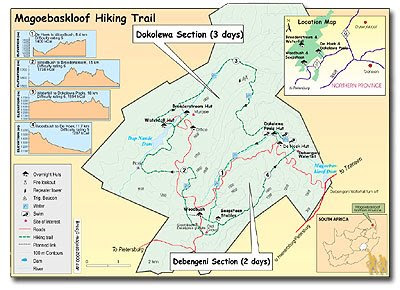Giant Eucalyptus in South Africa: the Grand Trees (I)
We have previously seen at EUCALYPTOLOGICS several examples of Giant Eucalypt Trees around the world, both at their natural Australian forest habitats, or as the heritage of forestry pioneers overseas, covering Spain & Portugal in Europe, the United States in America or New Zealand in Oceania. Today, aided by a guest expert from the Southern Hemisphere, we explore what could easily be the tallest cultivated Eucalyptus in the world. Join us in a virtual trip to visit the Eucalyptus Giants of South Africa! Our first step in the walk takes us to Magoebaskloof, another Valley of the Giants.
O'CONNOR's GIANTS: MONUMENTAL EUCALYPTUS AT WOODBUSH FOREST, SOUTH AFRICA
by Izak van der Merwe (1)
More than one century ago, in 1906, a stand of Eucalyptus saligna was planted on Woodbush Estate in the Limpopo Province by one of South Africa’s early forestry pioneers, Alexander James O’Connor. Many of the trees have reached nowadays impressive heights measured at between 70 and 80 m. In 2003 the tallest of these trees was measured by a land surveyor at 81.5m tall (+265 ft).

Fig. 1: Tallest tree in Africa, 81.5 m height (+265 ft) Eucalyptus saligna at Woodbush Forest Reserve, South Africa. Photo courtesy Izak van der Merwe. (Click image to enlarge)
This stand of trees is not only the tallest in Africa, but also the tallest group of cultivated Eucalyptus in the Southern Hemisphere, and possibly in the world. For two decades these monumental trees have been a well-known landmark to hikers along the Magoebaskloof Trail, which among other points of interest, allows the trekker to visit O'Connor's Memorial.

During a storm in September 2006 one of the giant Eucalyptus crashed to the ground and took the tallest tree down with it. A search will be done among this stand of trees to determine the new contender to the title of tallest tree in Africa.
Woodbush Forest Reserve is located in an extensive mountainous valley known as Magoebaskloof, where several other stands of giant Eucalyptus saligna thrive, all taller than 70 m. To some extent, this is another Valley of the Giants.

Fig. 3: O'Connor Memorial at Woodbush Forest Reserve, surrounded by giant Eucalyptus reaching 70 m height. Photo courtesy Izak van der Merwe. (Click image to enlarge)
The humid sub-tropical weather of this area of the country and its deep soils of granitic origin are thought to create the extra-ordinary growing conditions that led to many giant trees growing there.
These early O'Connor Giants might well have been inspirational for further Eucalyptus tree plantings taking place in the estates of the late Dr. Hans Merensky from the the 1930s ahead, opening the path for the Australian trees to become adopted as one of the major types grown nowadays in South African commercial timber plantations.
(1) = Izak van der Merwe is Senior Forestry Scientist at the Department of Water Affairs & Forests of the Republic of South Africa. Among other activities, and with the assistance of the Dendrological Society of South Africa he and DWAF have been charting South Africa's Champion Trees in order to help protect and preserve this global monumental natural heritage.
Want to know more?
Acknowledgements
EUCALYPTOLOGICS wants to express its gratitude to Rodrigo Giménez, Izak van der Merwe, the Department of Water Affairs & Forests of South Africa and the Dendrological Society of South Africa for their efforts at both sides of the Atlantic to identify and contribute to preserve remarkable trees in general and giant Eucalyptus in particular as natural heritage for future generations, and for contributing data and photography to make this small article delivered to readers in 94 countries around the world.
Also in EUCALYPTOLOGICS...
More Eucalyptus Giants around this site
Soon in Eucalyptologics...Giant Eucalyptus in South Africa: the Grand Trees (II)HANS MERENSKY, SOUTH AFRICAN EUCALYPTUS GIANTContact us / Subscribe to Eucalyptologics
 Contact GIT Forestry Consulting - Eucalyptologics
Contact GIT Forestry Consulting - Eucalyptologics
 GIT's Eucalyptology Topics
GIT's Eucalyptology Topics Subscribe to receive EUCALYPTOLOGICS via RSS
Subscribe to receive EUCALYPTOLOGICS via RSS
 Coordenação e Redação Técnica - Ester Foelkel & Celso Foelkel
Coordenação e Redação Técnica - Ester Foelkel & Celso Foelkel
























